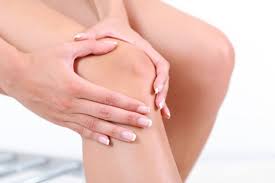Lateral Knee Pain
Pain about the lateral knee is a frequent problem, especially among distance runners. The most common conditions tend to be; iliotibial band friction syndrome; lateral meniscus abnormality, degenerative changes or a cyst formation.
Iliotibial Band Friction Syndrome
This condition occurs as a result of friction between the iliotibial band and the underlying lateral epicondyle of the femur. It is a common condition among distance runners, where the friction or impingement occurs near foot strike, or foot contact phase with the ground. Studies have shown that runners with this condition have significant weakness of their hip abductors in the affected limb.
Clinical Features
The patient complains of an ache over the lateral aspect of the knee, aggravated by running. Longer runs or those downhill or on cambered courses are particularly aggravating.
On examination, tenderness is elicited over the lateral epicondyle of the femur, just above the joint line. Crepitus may also be felt and repeated flexion/extension of the knee may reproduce the patients symptoms.
Ober’s Test may reveal ITB tightness which may be a secondary condition. There can also be palpable trigger points along the body of the ITB which can also contribute to the symptoms.
Treatment
* Activity modification. Avoid all pain-provoking exercises.
* Ice, anti-inflammatory medication, interferential therapy, ultrasound
* Corticosteroid injection into the bursa between the ITB and the lateral epicondyle reduces pain in acute cases
* Soft tissue therapy to correct tightness of the ITB. Trigger point treatment. Self-massage with foam roller.
* Frequent stretching of the ITB
* Strengthening of the gluteals / hip abductors
* Biomechanical abnormalities such as excessive sub-talar pronation should be corrected
* Surgery to release the ITB and excise the bursa may be indicated if conservative management fails.
* Resume running when there is no local tenderness and the strengthening exercises can be performed without pain. Initially run on alternate days and avoid downhill running.
Lateral Meniscus Abnormality
Degeneration of the lateral meniscus can also present as gradual-onset lateral knee pain. The meniscus is typically tender along the joint line, 2-3 cm below the site of tenderness at the ITB. A positive McMurray’s test can help confirm any suspicion of meniscal pathology. It is also worth noting that a degenerate meniscus can present as a painful or non-painful lump at the lateral joint line.
Osteoarthritis of the Lateral Compartment of the Knee
Lateral knee pain can also be caused by degeneration of the lateral tibial plateau and this is often found in conjunction with meniscal injury. As the disease progresses, the patient experiences pain at night that may disturb sleep associated with morning stiffness.
Initial treatment of osteoarthritis includes symptomatic relief with painkilling and anti-inflammatory medication, exercise prescription and weight loss if indicated. Intra-articular hyaluronic acid (Synvisc) injections have a similar effect to anti-inflammatories, but the patient does not have to take tablets daily.
Superior Tibiofibular Joint Injury
This injury may result from direct trauma or in association with rotational knee or ankle injuries. Pain occurs with activities such as pivoting or cutting. The patient may feel the pain distally at the shin and not localise it to the superior tibiofibular joint. On examination, the joint is tender and there may be restricted or excessive movement on passive gliding of the joint.
Manual mobilisation is an effective treatment for a stiff joint. Local electrotherapy may also help relieve pain. Biomechanical factors may also need to be addressed. Occasionally in patients who fail to respond to conservative measures, a corticosteroid injection may be used.
Medial Knee Pain
The main causes of medial knee pain are; patellofemoral syndrome, medial meniscus injury, degenerative changes or cyst formation.
Osteoarthritis of the Medial Compartment of the Knee
Management of this condition involves symptomatic relief with painkilling and anti-inflammatory medication, modification of activities, exercise prescription, and weight loss if indicated. Intra-articular hyaluronic acid (Synvisc) injections can be highly effective, with beneficial effects on pain and overall function. Occasionally, bracing can off-load the aggravating aspect of the knee joint and provide symptom relief.
Pes Anserinus Tendinopathy / Bursitis
The pes anserinus (goose’s foot) is the combined tendinous insertion of the sartorius, gracilis and semitendinosus tendons at their attachment to the tibia. The pes anserinus bursa lies between this insertion and the bone and may become inflamed.
These conditions are characterised by localised tenderness and swelling. Active contraction or stretching of the medial hamstring muscles reproduces pain. Treatment follows the general principles of tendinopathy / bursitis management. Corticosteroid injection into the bursa can be extremely effective.
Pellegrini-Steida Syndrome
This is a disruption of the femoral origin of the medial collateral ligament with calcification at the site of injury. This syndrome is an important cause of knee stiffness. The patient complains of difficulty straightening the leg and twisting.
Examination reveals marked restriction in knee joint range of motion with a tender lump in the proximal portion of the medial collateral ligament. Treatment consists of active mobilisation of the knee joint and infiltration of a corticosteroid to the tender medial collateral attachment if pain persists.
Posterior Knee Pain
The main causes of posterior knee pain are referred pain from the lumbar spine, tendinopathies or cyst formation.
Posterior knee pain precipitated by acceleration or deceleration when running and when kicking, is likely to be biceps tendinopathy or popliteus tendinopathy. Pain described as a poorly localised dull ache not directly related to activity suggests referred pain from the lumbar spine.
Popliteus Tendinopathy
The main clinical finding is tenderness on palpation along the proximal aspect of the tendon. Resisted knee flexion in external tibial rotation will be painful in popliteus injuries.
Treatment includes strengthening of the tibial rotators and hamstring muscles. Massage therapy and mobilsation may help to correct any restriction of tibial rotation or knee flexion.
Posterior knee structures, especially the hamstring muscles, should be stretched. Anti-inflammatory medication, ultrasound and interferential therapy may prove useful adjuncts to rehabilitation.
Patients who fail to respond to the above regimen may be helped by a corticosteroid injection posteriorly into the point of maximal tenderness.
Gastrocnemius Tendinopathy
This may result from excessive hill running or a rapid increase in mileage. Examination may reveal local tenderness and reproduced pain on calf raising, jumping or hopping. Treatment consists of ice, electrotherapy, soft tissue therapy, and importantly, a graduated stretching / strengthening programme.
Baker’s Cyst
This is a chronic knee joint effusion that herniates between the two heads of the gastrocnemius muscle. It occurs most commonly secondary to degenerative or meniscal abnormality. The amount of swelling may fluctuate and examination findings are a swollen, tender mass over the posterolateral joint line.
Occasionally the cyst may rupture, leading to lower leg swelling simulating venous thrombosis. A ruptured cyst usually displays a ‘crescent sign’ – a bruised area around the ankle. Treatment of the Baker’s cyst involves treatment of the associated abnormality.
Other causes of medial knee pain
The medial collateral ligament may also become inflamed as a result of activities that put a constant valgus strain on the knee, such as swimming breaststroke.
This condition is commonly referred as ‘breaststrokers knee’, and is actually a first degree sprain of the medial collateral ligament, or inflammation of the medial collateral ligament bursa due to excessive stress. Finally, a synovial plica may also present as medial knee pain.

